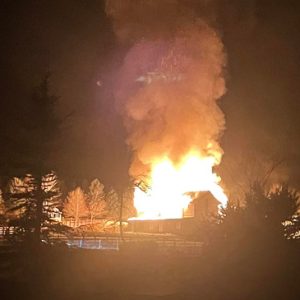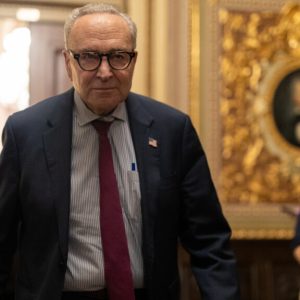Former President Donald Trump shocked political observers when he announced that U.S. forces had conducted a high-risk strike against a narco-submarine traveling through the Caribbean Sea. According to his statement, the mission destroyed the vessel, killed two suspected cartel operatives, and resulted in two additional survivors who were taken into U.S. custody. Trump presented the operation as one of the clearest victories to date in the ongoing fight against transnational narcotics networks. He released a dramatic military video showing thermal footage of the semi-submersible cutting through rough water before being struck by precision munitions. The messaging portrayed a confident, forceful U.S. response to the fentanyl crisis, designed to send a warning to traffickers worldwide.
Trump described the targeted submarine as a purpose-built “narco-sub,” a type of stealth vessel engineered to carry massive quantities of drugs while remaining nearly invisible to radar and patrol aircraft. These semi-submersibles, commonly deployed by South American cartels, ride low in the water and are built from lightweight materials to evade detection. Trump insisted the craft was loaded with fentanyl and other narcotics, linking the operation to America’s escalating overdose epidemic. He claimed the strike may have prevented up to 25,000 deaths — a figure critics later questioned, but one he used to underscore the urgency of aggressive interdiction efforts. The footage quickly spread across national media, becoming a viral symbol of muscular counter-narcotics policy.
Behind the scenes, Pentagon officials confirmed that the mission was part of a broader anti-trafficking campaign launched a month earlier. According to defense sources, surveillance drones monitored the submarine’s journey from what appeared to be a Venezuelan departure point. The Caribbean has increasingly become a heavily trafficked corridor as cartels adjust their strategies in response to tighter land routes. Officials noted that semi-submersibles now represent some of the most difficult targets to intercept. The two captured survivors — reportedly connected to a major South American cartel — are being interrogated aboard a U.S. warship, and Secretary of State Marco Rubio stated they are already providing valuable intelligence.
The operation comes at a politically charged moment, coinciding with rising demands for stronger action against fentanyl. The synthetic opioid remains the leading cause of death for Americans ages 18 to 34, and the crisis has become a defining political issue. Trump has emphasized fentanyl in his speeches, arguing that cartels pose a threat comparable to a hostile foreign military. Republican lawmakers have echoed the theme, with proposals such as Rep. Marjorie Taylor Greene’s call for the death penalty for convicted fentanyl smugglers. Although the proposal stalled, it signaled a growing appetite for hard-line policy. Within this context, Trump’s announcement reinforced his campaign narrative of decisive leadership and uncompromising national defense.
The Caribbean has become a focal point as traffickers adapt to increased surveillance on land. This latest strike is reportedly the sixth major interdiction since combat operations intensified. Defense officials describe the takedown as a “precision strike in international waters” carried out under full legal authority. The Pentagon simultaneously acknowledged that B-52 bombers conducted a show-of-force mission near Venezuelan airspace, signaling to cartels and hostile paramilitary actors that U.S. monitoring has expanded. Trump also confirmed approving additional CIA activity, suggesting the campaign is rapidly broadening. Still, critics warn that intensified U.S. military actions near unstable regions could spark unintended conflict, destabilize Caribbean nations, or strain diplomatic relations. Human rights groups argue that focusing on military solutions overlooks deeper economic and social drivers behind trafficking.
Reaction to the operation has split sharply along political lines. Trump supporters celebrated the mission as proof of effective leadership, praising the bold imagery and rapid results. Even some centrist commentators admitted the video offered striking optics, reinforcing Trump’s image as a decisive commander. However, national security analysts questioned Trump’s claim about preventing 25,000 deaths, noting that overdose trends cannot be measured by single operations. Others expressed concern over what they described as insufficient coordination between Trump’s team and current defense agencies, raising fears of mixed signals or parallel chains of command. As the Pentagon continues studying the wreckage and processing intelligence from the survivors, officials expect the operation to lead to additional strikes targeting regional trafficking routes. In the meantime, Trump has used the moment to double down on a message of uncompromising force: “The United States will never surrender to the cartels,” he warned. “We will hunt them, stop them, and destroy their operations wherever they hide — by land, air, or sea.”





